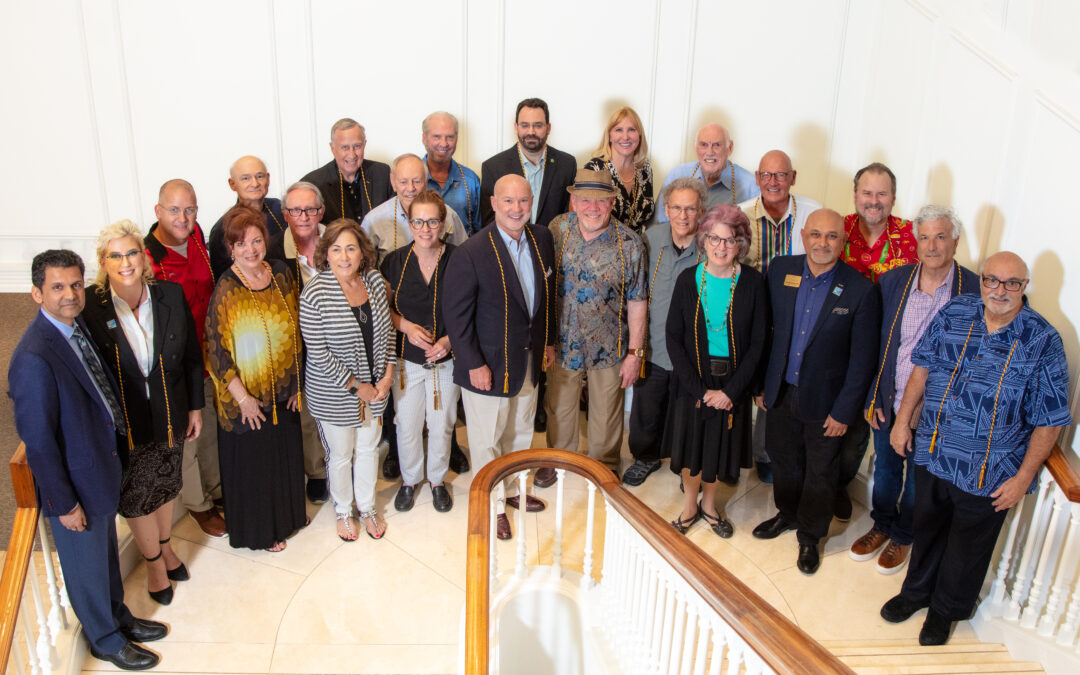Founded on this day in 1973, CAI has experienced a lot of changes, growth, challenges and opportunities. The organization now includes more than 45,000 members and 64 chapters and it has become the international center for community association best practices, learning, and advocacy.
Over the past 50 years, CAI and its members have grappled with exciting, frustrating, and sometimes grueling issues. What challenges and opportunities await CAI over the next few years? We asked leaders in the industry to share their perspective.
RISING INSURANCE COSTS
Many of the nation’s community association insurance markets have been hammered by rising claims—whether because of hurricanes in the East, severe weather in the Midwest, or disastrous wildfires in the West.
Aging buildings can affect whether a community can secure and maintain affordable insurance. In the East, many condominiums buildings are more than 50 years old and have antiquated electrical and plumbing systems that can cause problems like leaky pipes and water intrusion.
What’s a board to do? Jim Slaughter, an attorney with Law Firm Carolinas in Greensboro, N.C., and a fellow in CAI’s College of Community Association Lawyers (CCAL), says possible options include reducing the amount of coverage or reducing what is covered. Depending on the type of structure and its age, state statute may mandate certain coverage and certain amounts. Changes to insurance coverage in community associations often require governing document amendments that require homeowner approval.
CONFLICT
It could be rising monthly assessments, special assessments, sewage backups, poor grounds maintenance, and persnickety rules—among many other issues—that create conflict between boards and owners.
Budgeting is among the most contentious of issues in community associations. It behooves a board to keep owners apprised of the community’s financial standing early and often, and to explain budget realities in a narrative and straightforward manner—not just by citing figures that owners can read themselves. Instead, provide context for the figures. The reserves are depleted because? The special assessment is necessary because? Describe what may happen to the building or grounds if assessments don’t go up.
When conflict does arise between a board and an owner, it’s best to remember that the issue is very personal to the homeowner, advises Sara J. Ross, chair of CAI’s Business Partners Council, a CCAL fellow, and an attorney with Chadwick, Washington, Moriarty, Elmore & Bunn in Fairfax, Va. “But the board member should not act on it personally. Remain professional and courteous.”
BUILDING SAFETY
The partial collapse in June 2021 of the Champlain Towers South condominium in Surfside, Fla., killed nearly 100 people and is considered one of the worst building disasters in U.S. history. It remains one of the biggest challenges and opportunities CAI has faced in its history.
A little over a year before the building crumbled, an independent budget review warned the Towers’ residents that its financial reserves were critically underfunded given urgently needed structural repairs.
Kelly Richardson, a CAI past president, CCAL fellow, and an attorney with Richardson|Ober in Pasadena, Calif., recommends communities build reserves steadily, not suddenly. And if asking for more money from owners is the remedy, then again, explaining early and often, and in a narrative manner, the need for an assessment—and describing what might happen if one isn’t approved—may be a board’s best recourse.
MENTAL HEALTH
In the United States, one in five people lives with a mental health condition. One in 25 have a serious mental illness, like schizophrenia, bipolar disorder, or major depression. And over half of us—at some time in our lives—will be diagnosed with a mental illness or disorder.
When mentally ill residents live in a close-knit community, like a condominium complex, the repercussions of their conditions can seem amplified: They may wander the common areas disturbing others; they may threaten the safety of the building and its residents; and their behavior may leave a community liable if a board fails to check a potentially dangerous situation.
Stephen Marcus, an attorney and CCAL fellow in Braintree, Mass., advises a multi-step approach if a person becomes a disturbance or danger to themselves or the community:
- Document every interaction with the resident and all owner complaints.
- Try to reach relatives or close friends. Frequently, the resident’s family doesn’t realize the extent of his or her mental instability.
- Contact elder or social services in your area. Many local and state government agencies can provide care. Additionally, the Substance Abuse and Mental Health Services Administration offers resources.
- Call law enforcement if there’s a fear for residents’ safety.
- Call legal counsel if a pattern of behavior alarms residents.
- Bring an action to have a court control the conduct of the resident.
A BAD RAP
Negative portrayals in movies, on TV shows, and in commercials—as well as hyped “horror” stories on social media—can contribute undeservedly to community associations’ bad reputation. But so can the board of directors themselves. One common reason a board sours in the eyes of residents is because it tries too hard to control the community, Ross says.
“There are some boards that may go deep in the weeds in regulating, in the name of trying to maintain a harmonious and beautiful community,” Ross says. “Their hearts are in the right place, but their actions may come off to some as too dictatorial.”
Armed with historical knowledge plus a thoughtful perspective, CAI and its members remain ready to respond to current and future challenges and opportunities with passion, forethought, creativity, and energy.
>>Read more about CAI’s first 50 years and what may lie ahead in “Back to the Future” from the January/February 2023 Common Ground magazine.
>>Access details about CAI history and impact.
Photo caption: CAI presidents past, present, and future—23 in total—gathered at the 2023 Annual Conference and Exposition: Community NOW in Dallas in May. Photo by Brian Adams.


